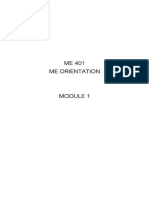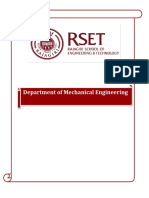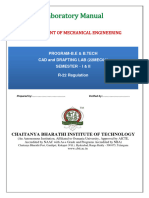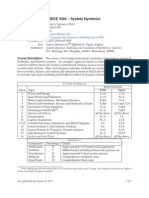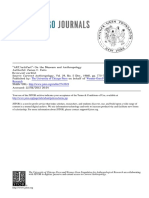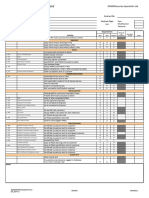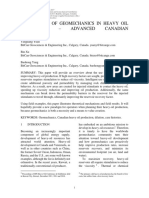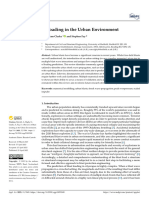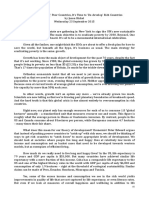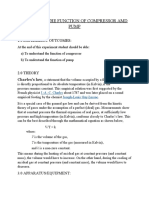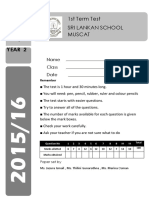0% found this document useful (0 votes)
39 views36 pagesModule-2 Compound Stresses Class Notes
The document outlines the course structure for 'Mechanics of Solids and Fluids' (BMT301) at Acharya Institute of Technology, detailing course outcomes, program outcomes, educational objectives, and specific outcomes for engineering graduates. It includes a syllabus for compound stresses, covering concepts such as stress tensors, principal stresses, and shear stresses, along with practical problems and assignments. The document is intended for internal circulation within the Department of Mechatronics for the academic year 2024-25.
Uploaded by
Prajwal prajuCopyright
© © All Rights Reserved
We take content rights seriously. If you suspect this is your content, claim it here.
Available Formats
Download as PDF, TXT or read online on Scribd
0% found this document useful (0 votes)
39 views36 pagesModule-2 Compound Stresses Class Notes
The document outlines the course structure for 'Mechanics of Solids and Fluids' (BMT301) at Acharya Institute of Technology, detailing course outcomes, program outcomes, educational objectives, and specific outcomes for engineering graduates. It includes a syllabus for compound stresses, covering concepts such as stress tensors, principal stresses, and shear stresses, along with practical problems and assignments. The document is intended for internal circulation within the Department of Mechatronics for the academic year 2024-25.
Uploaded by
Prajwal prajuCopyright
© © All Rights Reserved
We take content rights seriously. If you suspect this is your content, claim it here.
Available Formats
Download as PDF, TXT or read online on Scribd
/ 36














